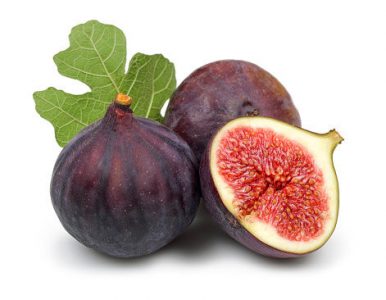13 Amazing Benefits of Consuming Figs to Improve Health!
The benefits of figs for health is due to its nutritious compounds, its sweet taste is a nectar of flavor, they are rich in sugar which makes it a delicious fruit, but is its consumption really healthy for the body? Figs are good sources of dietary fiber, antioxidants, minerals and vitamins. They are rich in potassium, calcium, magnesium, copper and iron and contain vitamins A, B6, E and K, which contribute to optimal health and well-being.
What is the Fig?
Figs are a sweet fruit with multiple seeds and soft skin, which can be eaten ripe or dried. Figs are also called nature sweets because they are high in natural sugar. It is the fruit of the fig tree, which is a member of the blackberry family, which is usually found in Asia. In India, the fruit is called anjeer. Different varieties of the fruit can have different colors of purple, red, green and golden yellow. The most popular types of figs include:
Types of Figs:
There are five common varieties and benefits of figs. Each type differs subtly in taste and sweetness. They are:
- Black Mission: Black Mission figs are black-purple outside and pink inside. They are incredibly sweet and even ooze syrup. They are perfect to eat as a dessert or mix recipes for cakes or cookies to increase the flavor.
- The Kadotas: They are green with purple pulp and less sweet among all varieties of figs. They are excellent for eating raw and also taste good if they are heated with a pinch of salt.
- Cali Myrna: They are greenish yellow figs on the outside and amber on the inside. They are larger compared to other figs and have a unique and strong nutty taste.
- Brown Turkey: Figs of this type have purple skin and red flesh. Its flavor is soft and less sweet than other figs. They work well in salads.
- Adriatic: Adriatic figs have a light green skin and are pink inside. These figs are often used to make fig bars. They are also called white figs since they are very light in color. They are extremely sweet and can be enjoyed as a simple fruit dessert.
History of the Figs:
 The name ‘fig’ originates from a Latin word called ‘ficus’ and an older Hebrew name called ‘feg’. They were natives of India and Turkey and arrived in America in the 17th century. Neolithic excavations of fig remains dating back to 5000 BC were discovered. C. They are even mentioned in the Bible as a sign of peace and prosperity. Figs were widely cultivated in the Middle East and Europe and arrived in China in the mid-17th century. Spanish missionaries planted world-renowned fig orchards in California in the late 19th century. The Assyrians used figs as sweeteners in 3000 BC It is known that the fig plant is the first plant cultivated by humans. Aristotle described the cultivation of fig in Greece in his works. Figs were also a common source of food for the Romans. The Greeks and Romans spread the fruit in the Mediterranean region.
The name ‘fig’ originates from a Latin word called ‘ficus’ and an older Hebrew name called ‘feg’. They were natives of India and Turkey and arrived in America in the 17th century. Neolithic excavations of fig remains dating back to 5000 BC were discovered. C. They are even mentioned in the Bible as a sign of peace and prosperity. Figs were widely cultivated in the Middle East and Europe and arrived in China in the mid-17th century. Spanish missionaries planted world-renowned fig orchards in California in the late 19th century. The Assyrians used figs as sweeteners in 3000 BC It is known that the fig plant is the first plant cultivated by humans. Aristotle described the cultivation of fig in Greece in his works. Figs were also a common source of food for the Romans. The Greeks and Romans spread the fruit in the Mediterranean region.
Applications:
Figs are sweet and soft and their pasta is often used as a sugar substitute. Fig spread is used as a healthier option instead of corn syrup and sucrose. It is incorporated into cakes, puddings, pies, assorted baked goods and preserves. Figs are considered a healthy snack.
Benefits of Figs:
The benefits of figs reduce the risk of cancer since they contain various substances such as flavonoid quercetin and several studies have shown that it can contribute to a lower risk of lung cancer and colon cancer.
1. Avoid Cancer:
In addition to quercetin, figs also contain luteolin; another type of flavonoid.
“This substance can stop the growth of tumors, because it neutralizes free radicals”.
Luteolin mainly has an effect in preventing the development of skin cancer, but it can also be important during its treatment.
2. Rich in Fiber:
The benefits of figs has fiber can protect against breast cancer in postmenopausal women. This is possible because the hormonal balance of these women can fluctuate a lot, causing hormones to affect the immune system. This can prevent the body from fighting the free radicals that cause cancer. However, by getting enough fiber, the body can protect itself against this.
3. Reducing Effect of Blood Pressure:
Figs contain a large amount of potassium. This is an important mineral that maintains heart rate and blood pressure. Eating figs can have a blood pressure lowering effect for this reason.
4. Strengthen Your Bones:
Eating figs can strengthen bones. This has to do with the large amount of calcium you get when you eat figs regularly. Calcium is known to be important for strong bones and may reduce the risk of osteoporosis. In addition to calcium, figs also contain phosphorus. This substance promotes bone growth, causing the bone to recover faster after damage.
5. Reduce the Risk of Macular Degeneration:
Macular degeneration is an eye condition in which visual acuity decreases. This often happens as people get older. If you eat 3 or more servings of fruits (such as figs, strawberries, olives or avocado) per day, you could reduce the chance of macular degeneration by 36%. This is compared to people who eat less than 1.5 servings of fruit per day.
6. Reduce Sore Throat:
Figs contain a large amount of mucilage. This is a sticky substance that is also known as plant glue. It is a natural remedy that works very well against a sore throat.
7. Help with Cardiovascular Function / Low Blood Pressure and Cholesterol:
Figs are a good source of potassium, a mineral that helps lower blood pressure. In animal studies, pectin is a soluble fiber in fig leaves and has been shown to contribute to lower levels of triglycerides in the body. Figs also contain high levels of antioxidant polyphenols that have been shown to help prevent atherosclerosis.
8. Improve Reproductive Health:
Clinical studies have shown that figs help increase sperm motility, this is essential for reproductive health. Researchers believe that this compound can be linked to the amino acids, magnesium and calcium found in figs.
9. Helps Lose Weight and Promotes Bowel Function
It was found that dietary fiber and the low amount of calories in figs had positive correlations with weight loss and weight control. It also helps intestinal transit and promotes good digestion.
10. Natural Cure for Anemia (Iron Deficiency)
Anemia is a condition in which your body does not have enough healthy red blood cells to transport adequate oxygen to your tissues. Figs contain copper and iron, two minerals that are necessary for the formation of red blood cells and cell oxidation.
11. Improve Digestion
Figs also contain prebiotics, which help the good bacteria already existing in the intestine. Good bacteria are essential to maintain optimal digestion.
12. Promote Hair Growth
Hair loss usually occurs due to lack of proper nutrition. Figs contain hair-friendly nutrients such as magnesium, vitamin C and vitamin E that promote hair growth. The essential nutrients present in this fruit stimulate blood circulation in the scalp to accelerate hair growth.
13. Soft and Flexible Skin
Figs contain a high amount of vitamin C, a powerful antioxidant that helps clarify and balance skin tone. Mix five figs to get a smooth paste. Add a teaspoon of oatmeal powder and milk and half a teaspoon of dried ginger powder. Mix well to form a smooth paste.
The Potential Health Risks Associated with Figs are:
1. High Sugar Content:
Dried figs are high in sugar and calories compared to fresh figs, 55 percent of their weight is sugar. This equals 185 calories per 1/2 cup. If you have diabetes or prediabetes, do not eat figs too often and only with the advice of your doctor or nutritionist.
2. Laxative Effect:
Due to its high fiber content, it can have a mild laxative effect and should not be eaten in excess, especially when it comes to dried figs.
3. Oxalates:
The benefits of figs also contain natural substances called oxalates. When oxalates are concentrated in body fluids, they can crystallize and cause health problems such as the gallbladder and kidney stones. Therefore, people with kidney or gallbladder problems should avoid eating figs.
4. Contains Sulphites:
Dried figs can be treated with sulfur dioxide gas during processing to help prevent oxidation. They can also be treated with sulphites to prolong their shelf life. People who are sensitive to sulphites should avoid foods that contain sulphites, such as dried figs. Five percent of asthmatic people may suffer exposure to sulphites that cause an allergic reaction in them.
Note: Never consume green figs. They produce white latex that contains compounds such as furocoumarins and 5-methoxy psoralen (5-MOP), which can cause a severe allergy around the mouth and lips that can spread rapidly to other parts of the body.





